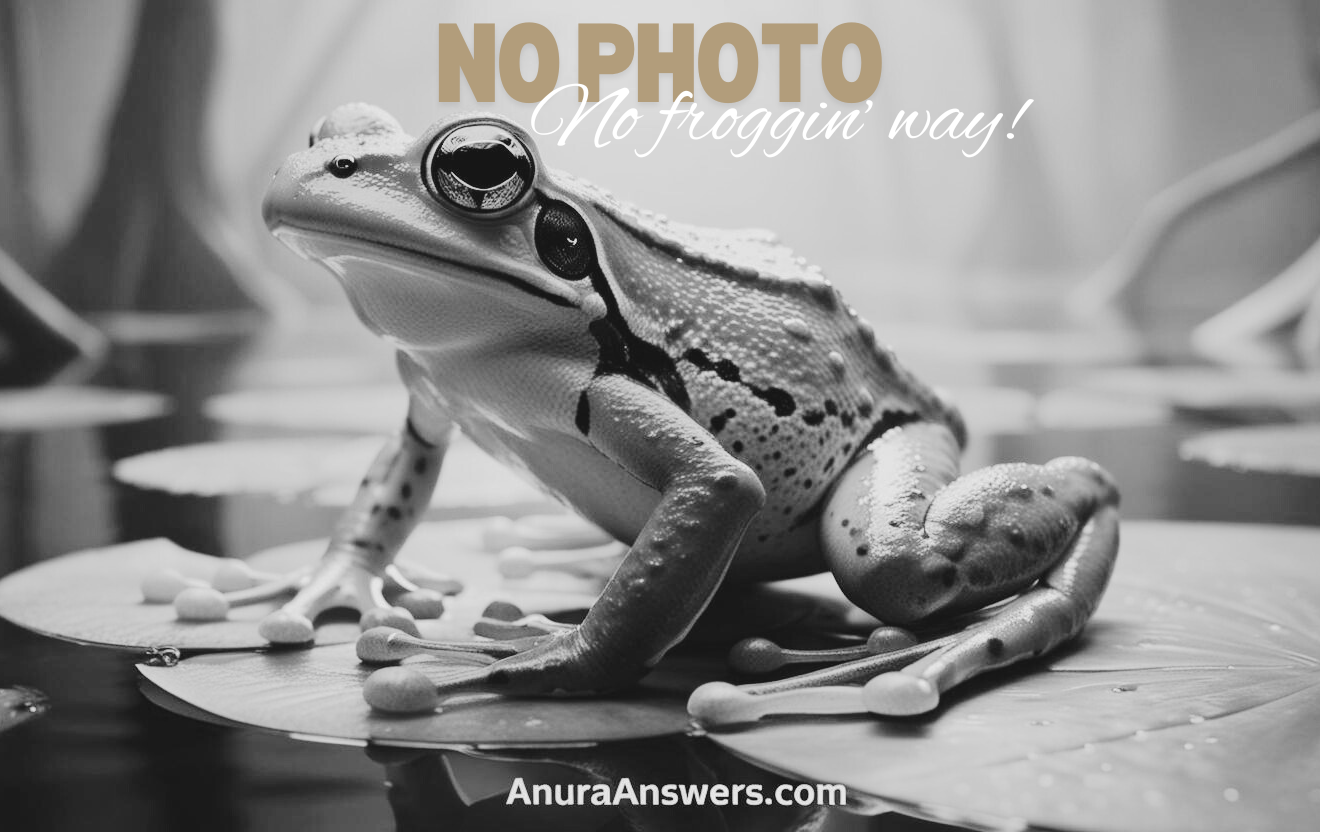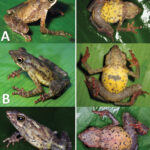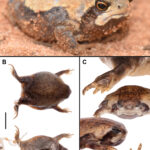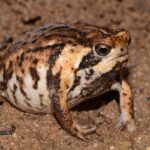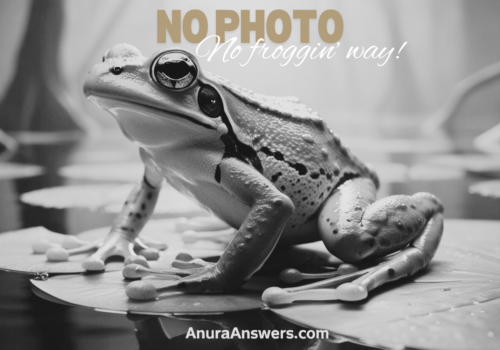- The Enigmatic <em>Atelopus manauensis</em>: Jewel of the Amazonian Rainforest
The Enigmatic Atelopus manauensis: Jewel of the Amazonian Rainforest#
Introduction#
Deep within the humid embrace of the Amazon rainforest, hidden among verdant leaves and gently flowing streams, lives a richly colored amphibian whose very existence resonates with the pulse of its habitat: the enigmatic Atelopus manauensis. More commonly known as the Manaus harlequin frog, this fascinating species serves as both an extraordinary representative of amphibian diversity and a subtle yet powerful indicator of ecosystem health.
Named after the vibrant city of Manaus in Brazil, Atelopus manauensis captivates biologists and nature enthusiasts alike with its flamboyant appearance and intriguing behaviors. Despite its compelling charisma, this frog remains less familiar to the general public than other rainforest celebrities—yet beneath its colorful exterior lies a crucial story of biodiversity, survival, and ecological balance.
Taxonomy and Classification#
Atelopus manauensis belongs to the family Bufonidae, widely known as true toads and harlequin frogs. Within this family, the genus Atelopus comprises a dazzling group of brightly colored amphibians traditionally dubbed “harlequin frogs,” famed for their striking patterns and potent toxins. Described scientifically in 1984, Atelopus manauensis shares close relatives scattered across South and Central America, many of which, sadly, currently face severe conservation challenges and declining populations.
Within its genus, this species stands out for its distinctive color patterns and restricted geographical range, qualities that significantly contribute to its uniqueness and vulnerability. Taxonomically distinct yet closely related to fellow Amazonian harlequin species, the Manaus harlequin frog has captivated scientists, shedding light on the evolutionary processes shaping amphibians in the ever-changing Amazonian landscape.
Natural Habitat#
Geographic Range#
Exclusive inhabitants of the lush Brazilian Amazon region near Manaus, Atelopus manauensis occupies a relatively small, specialized geographical range. Its distribution is primarily limited to the central Amazon Basin, particularly the protective microhabitats within lowland rainforest ecosystems and gently flowing freshwater streams that weave among ancient trees and moss-covered rocks.
Habitat Preferences and Adaptations#
At first glance, one might mistakenly overlook these vibrant frogs camouflaged amongst rainforest foliage or blending seamlessly into moss-covered sections of rocks adjacent to clear, rippling streams. But look closely, and the elaborate beauty of Atelopus manauensis reveals itself—a stunning mosaic of black, yellow, and green hues mirroring the dappled shade and sunlight patterns created by the dense forest canopy above.
The frog thrives in humid, cool microclimates close to aquatic environments; the proximity of clear-flowing, oxygen-rich streams is pivotal for its reproduction, as tadpoles depend heavily on pristine water quality. This reliance on undisturbed forest ecosystems closely binds Atelopus manauensis to the broader health and stability of Amazonian forests, highlighting its critical role as an ecological sentinel.
Physical Characteristics#
With adults typically measuring between 2 to 4 centimeters, Atelopus manauensis is a small, delicate figure amidst the expansive Amazonian landscape. Yet what it may lack in stature, it compensates for abundantly in bold aesthetic qualities—a paradox of vibrant coloration paired with cryptic patterns. Its radiant skin, boldly patterned in vibrant yellows, verdant greens, and stark blacks, makes this frog unmistakably eye-catching, yet paradoxically aids in effective camouflage against the dazzling backdrop of its natural habitat.
These striking markings are not purely ornamental; they serve a crucial biological function as aposematic, or warning, coloration that signals danger to potential predators. Like other harlequin frogs, Atelopus manauensis secretes potent alkaloid toxins through their skin, deterring predation and providing an evolutionary advantage in the predator-rich environment of the Amazon rainforest.
Behavior and Life Cycle#
Feeding Habits#
An agile predator within its microcosmic world, Atelopus manauensis cautiously hunts small arthropods—primarily insects and arachnids—among leaf litter, undergrowth, and stream banks. With a keen visual acuity and lightning-quick tongue strikes, this small amphibian efficiently tackles prey items, playing a pivotal role in controlling insect populations and maintaining delicate ecological balances within its niche.
Mating and Reproduction#
When rainy season envelops the forest in persistent moisture, males of this elusive frog become conspicuously vocal near stream edges, their gentle trills subtly resonating through dense undergrowth. Drawn to these calls, female Atelopus manauensis select mates through nuanced vocal signals and physical interactions, choosing sites along rocky riverside terrain to deposit their gelatinous masses of eggs.
As eggs hatch into delicate tadpoles, they remain intimately connected to clear, flowing water, drawing nourishment from microscopic algae, detritus, and biofilms that thrive in healthy aquatic environments. Gradually, they metamorphose into young frogs that disperse into the surrounding rainforest, thus continuing their intricate life cycle within this richly connected habitat.
Ecological Role#
Small though they may be, Atelopus manauensis frogs dramatically impact their ecosystem. Their appetite for insects helps keep pest populations balanced, indirectly supporting plant communities and larger wildlife dependent on vegetation health. Simultaneously, as prey themselves, these frogs sustain an array of Amazonian species—from reptiles and birds to larger amphibians—adding to the food web’s complexity and diversity.
Furthermore, these amphibians signal environmental quality. Their permeable skin, sensitive reproductive requirements, and limited habitat flexibility distinctly position them as ideal bioindicators; changes in their populations often presage broader ecosystem transformations.
Threats and Conservation Status#
The story of many harlequin frogs is one of beauty tinged tragically with vulnerability, and Atelopus manauensis is no exception. While officially classified by the International Union for Conservation of Nature (IUCN) as Data Deficient due to insufficient population data, incessant forest fragmentation, logging, agriculture expansion, pollution streams, and climate change undeniably threaten its survival.
Moreover, fungal pathogens like the chytrid fungus Batrachochytrium dendrobatidis, causing rapid amphibian declines globally, present severe threats to Atelopus manauensis. Local conservationists fight diligently to reverse habitat loss, implementing protected areas, scientific studies, captive breeding programs, and involving community-based conservation education to preserve vital habitats.
Cultural and Scientific Significance#
Culturally, frogs and toads in Amazonia have historically symbolized fertility, transformation, and healing among indigenous peoples—embodying connections between water, earth, and life itself. While specific cultural practices directly involving Atelopus manauensis are limited in the documented literature, there is widespread reverence and respect among local communities witnessing firsthand these vibrant species inhabiting their ancestral lands.
Scientifically, the Manaus harlequin frog stimulates discovery and understanding around the subtle yet complex webs of interaction within ecosystems. Researchers leverage the species’ sensitivity to environmental changes, utilizing its responses as valuable indicators of rainforest health—helping inform essential decisions in ecological monitoring and conservation approaches.
Conclusion – Safeguarding the Manaus Harlequin Frog#
More potent than its small stature suggests, more remarkable than its vibrant appearance reveals, Atelopus manauensis is undeniably intrinsic to its Amazonian home. The story of this small harlequin frog encompasses themes universally crucial to today’s world—biodiversity conservation, ecological connectivity, and the critical impact of human actions on delicate habitats.
By highlighting the remarkable life history, habitats, and ecological contributions of this extraordinary amphibian, we invite you to join conservationists, scientists, and communities in efforts to protect the forests, wetlands, and waters preserving this irreplaceable species. Together, through awareness, appreciation, and reimagination of our roles as conservators of life, we ensure that future generations may also experience the subtle thrill of an Amazonian journey filled with vivid sounds, sights, and the magical, elusive beauty of the Manaus harlequin frog.
